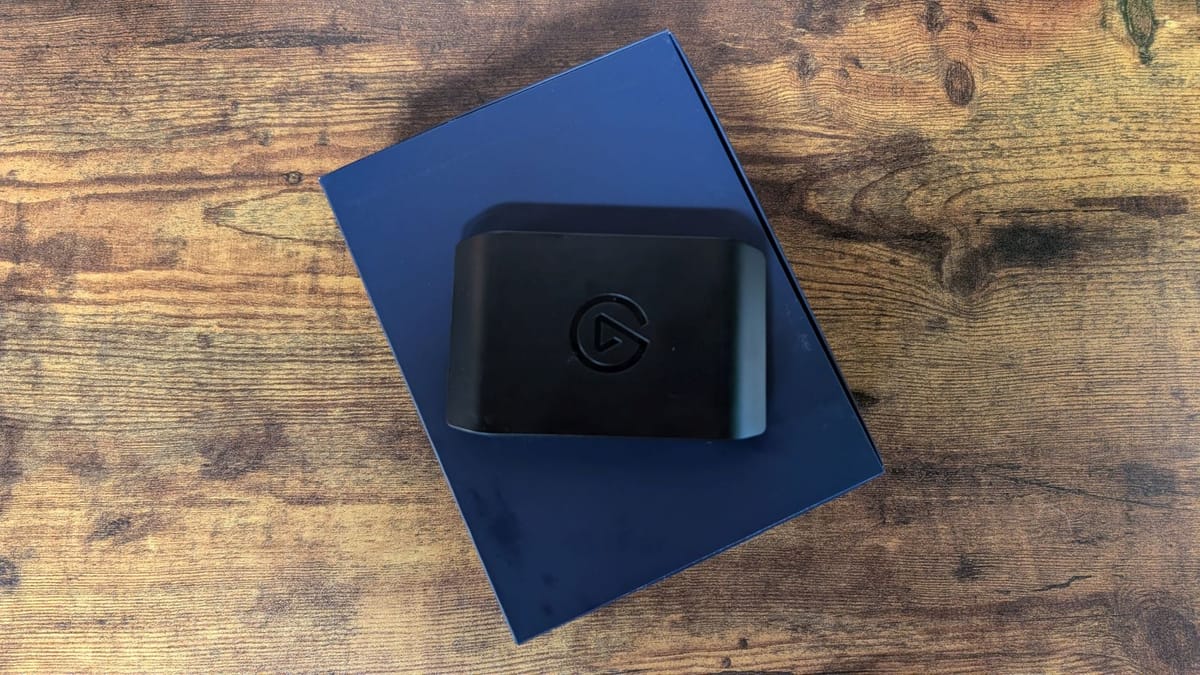
My first experience with anything Elgato was their HD60 S capture card. Sadly, it has bit the dust as of this year, but provided me years of use. Needless to say, I’ve been due a new capture card for a hot minute, and Elgato’s new 4K S is more than an incremental upgrade to what I’ve been using. Since it’s been a while, all I had hoped for was a step up in performance. With all Elgato has added over the years, however, I can’t recommend the 4K S enough based on what I’ve been able to get out of it beyond just better capture.
Inside the box you’ll find the Elgato 4K S capture card, a USB-C to C cable, and a HDMI 2.0 cable. While I’ve received and seen multiple capture cards come with horribly short cables, here I’m impressed. Both the USB-C and HDMI cables are five feet long and of a high, with a braided sheathe, and high quality. Good job putting everything in the box I’ll want to use, Elgato.
One of my favorite things about Elgato’s gear is the simple design aesthetic. It may not look like much, but the 4K S is sleek and will fit in your pocket in a pinch if it needs to go with you – we’ll come back to that portability. With a USB-C port for power and connection for your capture use, an HDMI in and out, and a 3.5mm jack for shout-casting and gamechat opposite the indicator LED, everything necessary for a capture card is here, no frills, all thrills.
All of this leads to an outstanding plug and play experience. Even if it were easy to slip into your bag, it could be a pain in the butt to use. Thankfully, that’s not the case here, joining with other Elgato products in being painless to set up and operate. Plug your USB-C cable into your capture terminal, plug your HDMI in from the device you want to capture and into a TV or monitor if you want to use the passthrough function, and you’re done. Super easy, barely an inconvenience.
It’s widely recognized on the software side as well. While the team has their own software studio available (more on that later), you’ll be able to use this with OBS, Streamlabs, and more. As soon as I booted into OBS, I was off to the races once I had added the 4K S as a source. If it’s as simple as this with most capture studios, this makes your gameplay input the least of your worries – something a content creator doesn’t need to be concerned about in the midst of a bunch of other often-cumbersome sources like audio channels or cameras.
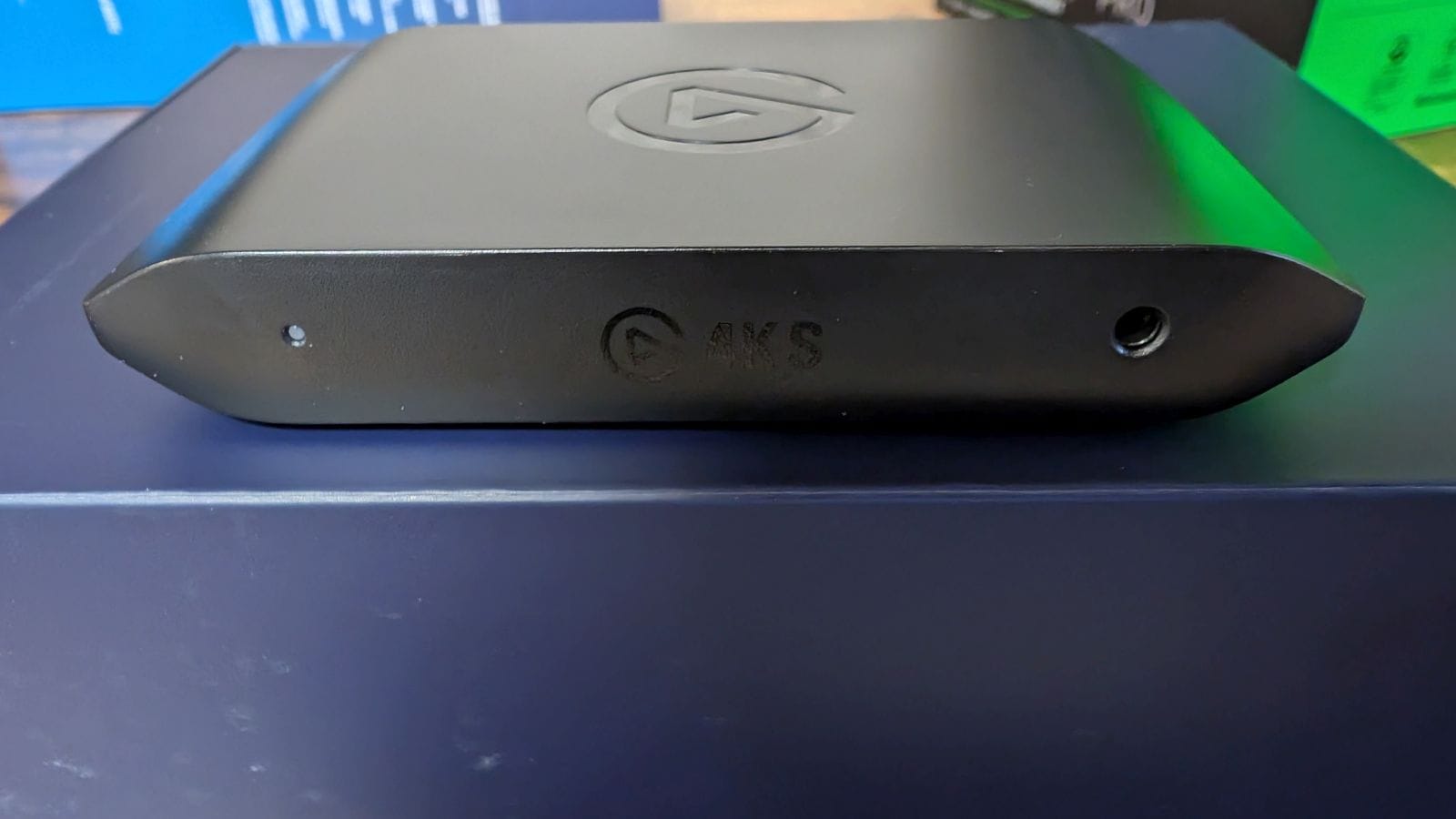
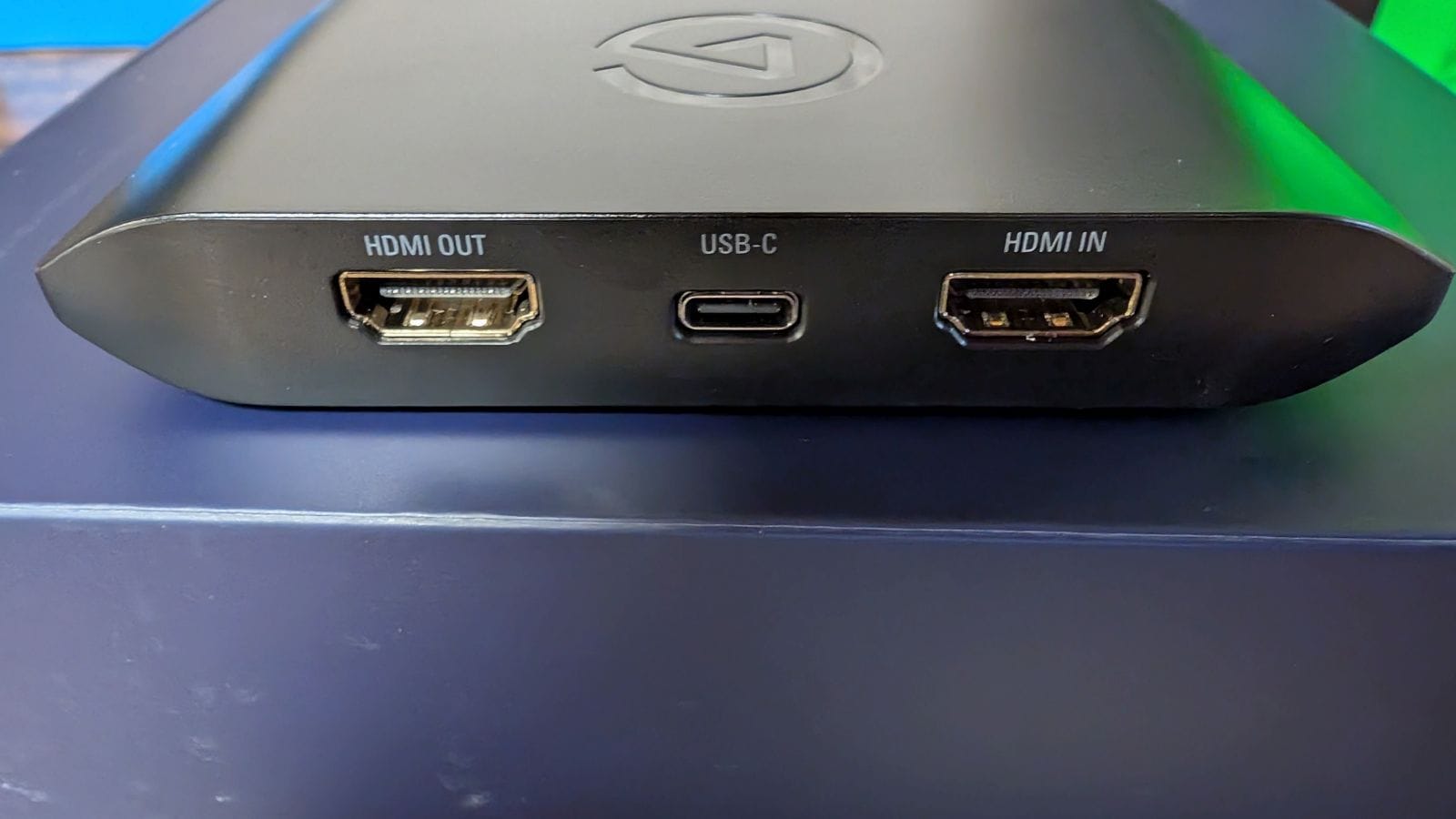
I already mentioned how portable the 4K S is, but I didn’t realize how ridiculously portable it was until taking it on a recent weekend trip. After an assembly that took only a minute, I sat back to play a few games on my Nintendo Switch 2, capturing as I went. Over two hours I played Tamagotchi Plaza and Donkey Kong Bananza, and didn’t have a single hitch with either of them. The audio and video worked flawlessly through passthrough, with no noticeable input lag either. Excellent portability matched with excellent performance makes the life of the traveling streamer or journalist much simpler.
Obviously it all works on PC, but that’s not the only option. Part of what makes it all work for my weekend trip is iPad compatibility. While this has been a feature in previous models, I haven’t had a recent Elgato capture card with that capability. After using it this way, I’m sold. The only qualm will be the limited capture resolution – you’re stuck at 1080p/60fps at best – but as great as it works, you’ll take it. That said, I did notice in my time using an iPad there was a bit of audio lag, which won’t make a difference if you’re utilizing the passthrough capability. It largely captures correctly in the Elgato studio app, so that’s all that matters. Capturing gameplay also doesn’t kill your battery – I had about twenty percent run off during an hour session, with less during my second hour.
Moving to PC capture, I had an odd lag issue on a laptop when grabbing Cyberpunk 2077 and Marvel’s Spider-Man 2. This could be where I didn’t have it plugged in and didn’t get my full performance boost, but it was noticeable, even if it captures correctly. On my actual desktop, everything was much smoother, without a spot of lag during my Mario Kart World gameplay on both Elgato’s studio app and OBS.
| 4K S | HD60 X | Game Capture Neo |
|---|---|---|---|
MSRP | $159.99 | $179.99 | $129 |
Passthrough |
|
|
|
Capture | 4K60 or 1080p60 HDR | 4K30 or 1080p60 HDR | 1080p60 |
1440p Capture | Up to 1440p120 | Up to 1440p60 | X |
Ports | HDMI in, HDMI out, 3.5mm line-in | HDMI in, HDMI out, 3.5mm line-in | HDMI in, HDMI out |
Official app | Elgato Studio | 4K Capture Utility | Elgato Studio |
Software Compatibility | OBS Studio, Meld, Streamlabs, etc | OBS Studio, Meld, Streamlabs, etc | OBS Studio, Meld, Streamlabs, etc |
Works with | PC, Mac, iPad | PC, Mac, iPad | PC, Mac, iPad |
The 4K S supports a wide range of resolutions and framerates. With up to 4K or 120fps capture available (up to 240fps passthrough), you can go crazy with whatever you’re working on, getting high-end capture in whichever direction you choose. I’ve included their own chart above so you can see how much of a jump this is, even from the HD60 X. Even though the 4K S can handle 240fps, I feel like it’s somewhat like how the PS5 can support 8K gaming. It might be able to, but most devices out there aren’t going to give it to you – the current slate of games won’t either. I don’t mind future proofing, and Elgato is doing what they usually do: offering the consumer the most for their money.
Even better are the included 1440p and VRR support – perfect if you just picked up a PlayStation 5 Pro. 1440p allows you to get that sweet 120fps capture (which even the HD60 X didn’t have). VRR support makes sure your passthrough is clean, which is extremely important if you’re playing games that require precision. As a competitive Call of Duty player, I can tell you that every extra frame can make a difference, and similarly, a screen tear can mean an extra death.
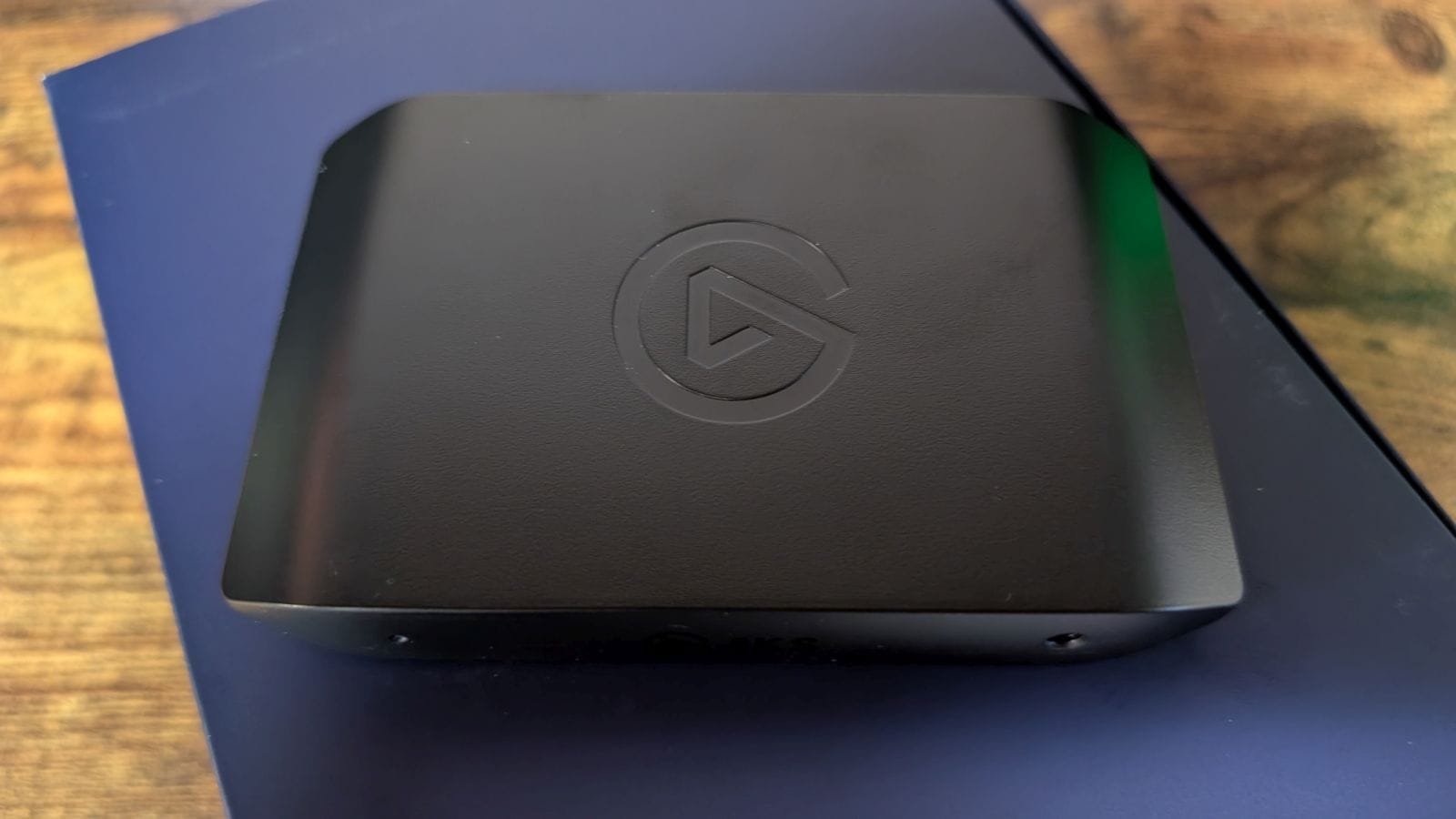
During my time capturing Cyberpunk 2077 and Marvel’s Spider-Man 2, I also noticed a surprising difference between my native gameplay and the captured gameplay. Elgato’s ability to capture 1080p HDR gameplay is astounding, with a vibrancy that eludes the PS5. PlayStation needs to figure this out, because I’ve had horrendous native capture before at a press event that nearly ruined a preview video I did, and here Elgato has it looking better than even what I’m seeing on my TV. Some of that might be on the .MOV format from iPad capture, but even side by side I can see differences. Good on you, Elgato.
Elgato’s new Studio software and app are great, but they are admittedly quite basic. You can’t directly stream from it, forcing the use of OBS or Streamlabs as a result. This is just for capturing gameplay, which it’s very good at. I like the bar showing me how much space I have on my iPad, along with how long the video is and how much space it will take up when I hit the stop button. There’s also an indicator up top, showing you what resolution and frame rate you’re receiving from your device, what you’re capturing at, and what you’re getting through passthrough.
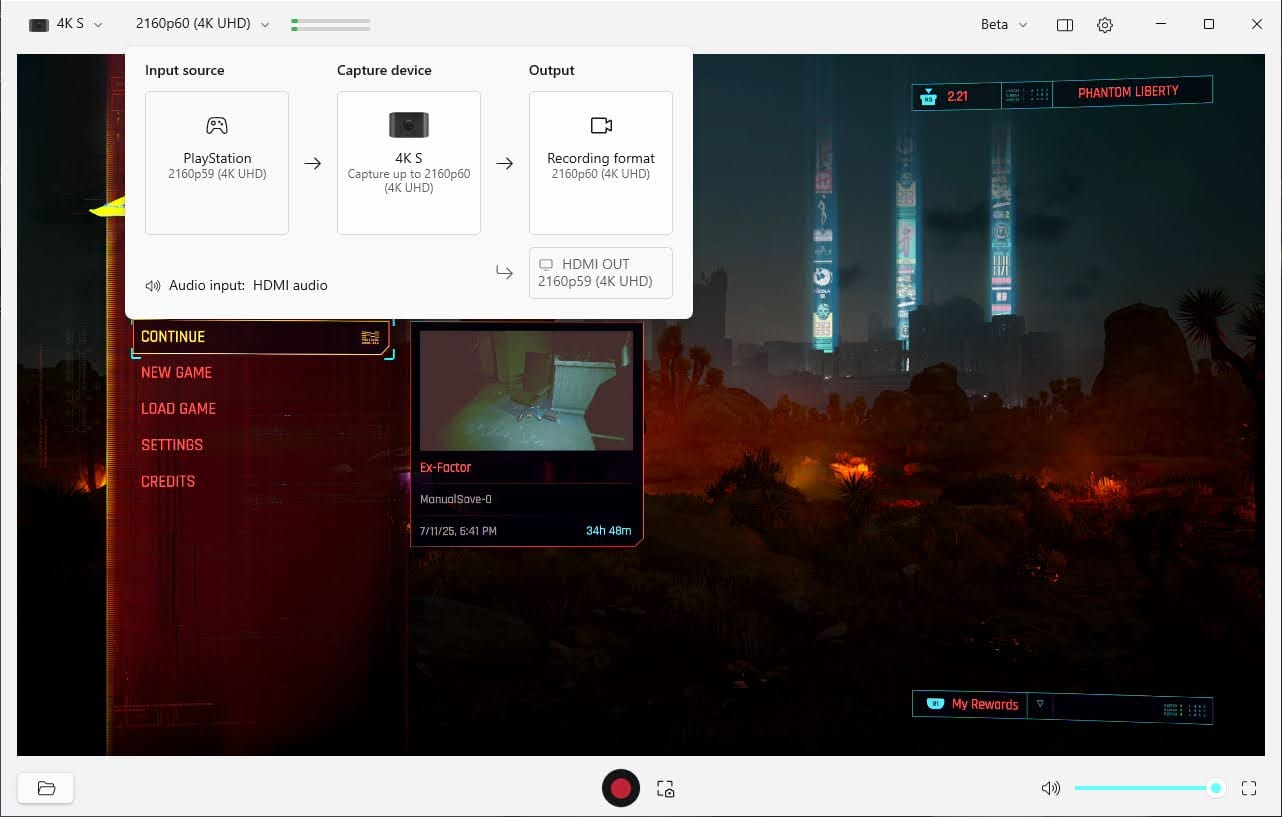
There are a few minor adjustments available through settings, along with updating your 4K S, but Elgato Studio is here to clock in and capture, plain and simple. I’d imagine there will be updates in the future to add more features, and hopefully we can get a full editing and streaming suite going to flesh out the experience. The capture card is already amazing, let’s get some elaborate software behind it.
Lastly, let’s talk value. Elgato has managed to bring the 4K S to market, give it all of these upgrades (even if some are incremental), and still manage to bring the price under the HD60 X at twenty bucks cheaper ($159.99). Yes, you can go out there and buy cheaper capture cards. But I doubt you’ll find one that offers the consistency, range, and reliability of what Elgato offers.
Elgato 4K S capture card
Phenomenal
Elgato always manages to raise the bar with their gear, and they’ve done it again with the 4K S capture card. If you want something easy to use, they’ve got you covered. If you want something that gives you a great range of resolution and frame rate, the 4K S offers that. If you want portability, you won’t get better than this. In any case, you want an Elgato 4K S, that’s a fact.
Pros
- Extremely portable
- Outstanding range of resolution and frame rate
- Near to no input lag
- Even better PS5 capture than native capture
- IPAD CAPTURE SUPPORT
Cons
- Elgato Studio is a bit bare bones
This review is based on a retail copy provided by the publisher.
